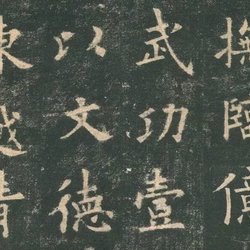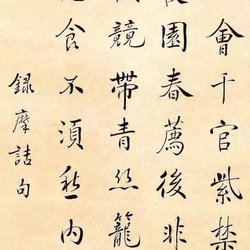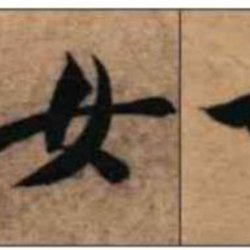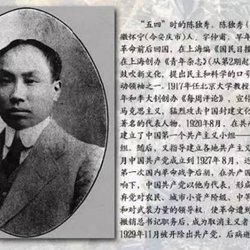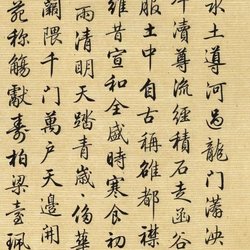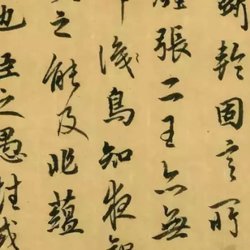1. Eastern Jin Dynasty-Wang Xizhi's family's "Three Treasures of Treasures"
The Three Xibao Tie is the only three authentic works left to later generations by the family of the calligrapher Wang Xizhi of the Eastern Jin Dynasty (respectively, Wang Xizhi's "Kuaixue Shiqing Tie", Wang Xianzhi's "Mid-Autumn Tie" and Wang Xun's "Boyuan Tie"). The oldest existing authentic Dharma calligraphy has been regarded as the supreme treasure and the originator of Dharma calligraphy by the past dynasties. It is a well-deserved Chinese divine product and is stored in the National Palace Museum in Beijing and Taipei.
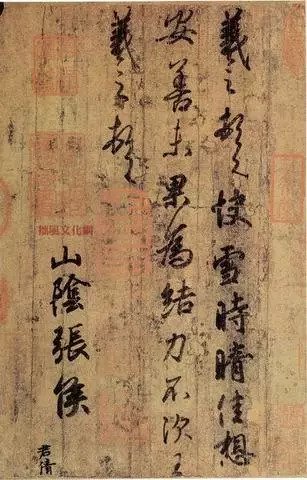
"Quick Snow and Clear Tie", paper version, four lines, twenty-eight characters. Now in the National Palace Museum, Taipei. Explanation: Xi Zhi paused. It snows and then it clears. Jia wants peace and kindness. Unsuccessful. For the knot. Not strong enough. Wang Xizhi paused. Shanyin Zhanghou. Jun Qian.
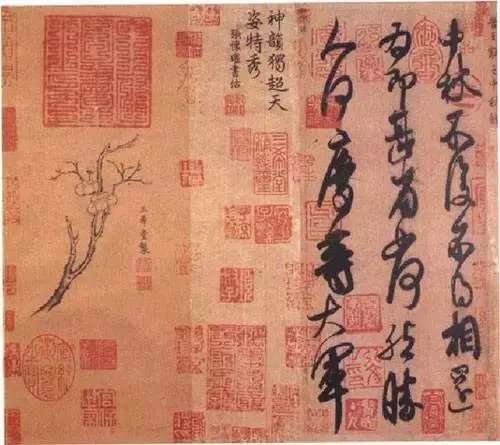
"Mid-Autumn Tie" in cursive script, paper, 3 lines, 22 characters in total, collected by the Palace Museum in Beijing, said to be a book presented by the King of Jin Dynasty. Hand scroll, 27cm in length and 11.9cm in width. Explanation: "The Mid-Autumn Festival will no longer be able to meet each other and return to the province. How can we defeat He Qing and other large armies." No signature.
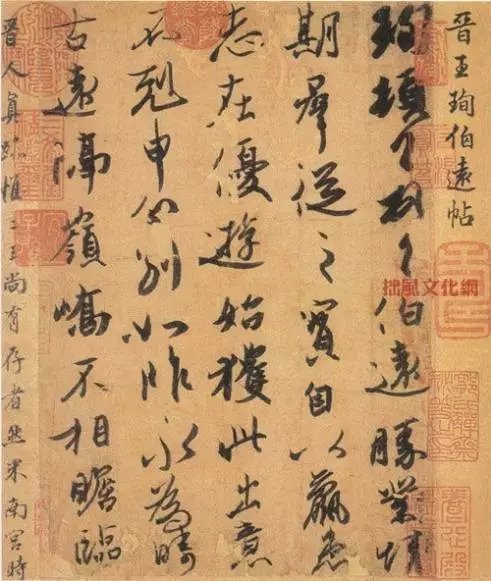
"Bo Yuan Tie" is a letter written by Jin Wang Xun (350-401). Original text: "Xun Dun bowed his head, Bo Yuan Sheng's karma was the treasure of the group. Since he was suffering from illness, he was determined to travel well. It was unexpected to get this unexpected thing. The separation is like yesterday and will last forever. Far away from the mountains and valleys, we can't see each other. See you soon."
2. Eastern Jin Dynasty - "Lanting Preface" by Wang Xizhi
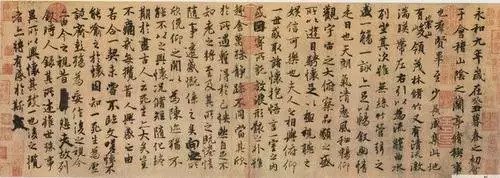
"Lanting Preface" is also known as "Lanting Banquet Collection Preface", "Lanting Collection Preface", "Linhe Preface", "Ye Preface" and "Ye Tie". One of the three major running script calligraphy posts. "Lanting Preface" expresses the highest state of Wang Xizhi's calligraphy art. The author's magnanimity, spirit, mind, and emotions are fully expressed in this work. The ancients said that Wang Xizhi's writing style was like "the breeze comes out of the sleeves and the bright moon enters the arms", which is a wonderful metaphor.
3. Tang Dynasty - Ouyang Xun's "Zhongni Meng's Memorial Ceremony"
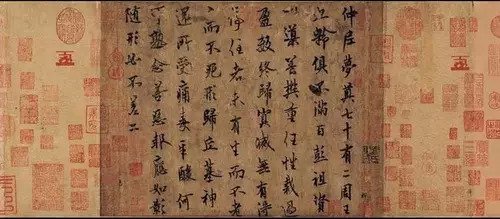
The running script of "Zhongni Meng's Ceremony Calligraphy" was written by Ouyang Xun, a famous calligrapher in the Tang Dynasty. There are seventy-eight characters in total, no seal. The calligraphy is vigorous and ancient. It was once included in the collection of the Imperial Household Office of the Southern Song Dynasty. It has two seals of the Southern Song Dynasty's "Yufu Dharma Book" Zhu Wen, "Shao" and "Xing" Zhu Wen Lianzhu. It was later passed by Jia Sidao of the Southern Song Dynasty, Guo Tianxi of the Yuan Dynasty, Xiang Yuanbian of the Ming Dynasty, and Gao Shiqi of the Qing Dynasty. It was handed over to the Imperial Household of the Qing Dynasty for collection. The ink used in this post is light but not thick, and it is written quickly with a bare pen. It turns freely, without a single stroke being inappropriate or stuck. The upper and lower contexts are clear, the structure is steady and solid, the brush strokes are calm, the charm is smooth, the body is square and the strokes are round. , charming and strong, was written by Ouyang Xun in his later years. It is pure and powerful, and it is truly a rare treasure. The paper version of "Zhongni Meng's Ceremony Calligraphy" is 25.5cm in length and 33.6cm in width. It is now in the collection of Liaoning Provincial Museum.
4. Tang Dynasty - Yan Zhenqing's "Manuscripts for Nephew Memorial"
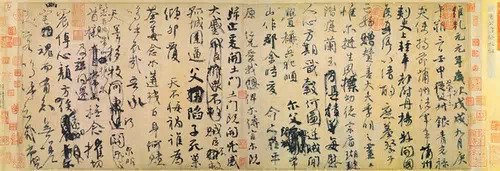
The full name of "Memorial to My Nephew Manuscript" is "Manuscript of Ji Ming's Nephew", which is one of the three major running script calligraphy scripts. It was written in the first year of Qianyuan of Tang Dynasty (758 AD). It is on linen paper, running script, 28.2 cm long and 75.5 cm wide, with twenty-three lines, each line ranging from eleven to twelve characters, totaling two hundred and thirty-four characters. The bell has seals such as "Zhao's son, the Subaru family", "Daya", "Xianyu", "Shu", "Xianyu Shu's uncle and father", and "Xianyu". The eternal value of "The Manuscript of Memorial to My Nephew" lies in its frankness and sincerity. It is a model of using sincere emotions to drive the pen and ink, and under passion, regardless of clumsiness, and free to create as one pleases. It was once collected by Xuanhe Neifu of the Song Dynasty, Zhang Yan of the Yuan Dynasty, Xian Yushu of the Yuan Dynasty, Wu Ting of the Ming Dynasty, Xu Qianxue of the Qing Dynasty, Wang Hongxu, and the Neifu of the Qing Dynasty. It is now in the collection of the National Palace Museum in Taipei.
5. "Autobiography" by Huaisu of the Tang Dynasty
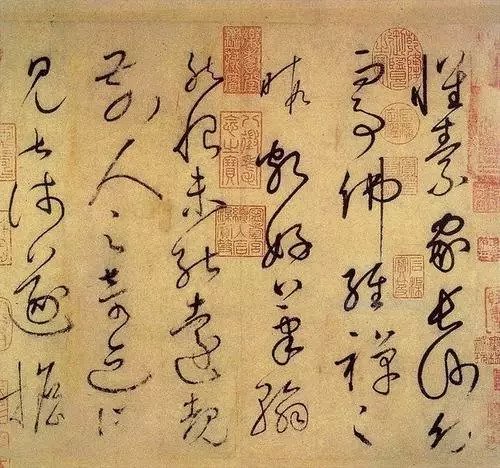
"Autobiography" written in cursive script by Huai Su, a calligrapher of the Tang Dynasty. The first cursive script in China. The content is a self-reported experience of writing cursive script, as well as the comments of the scholar-bureaucrats on his calligraphy at that time, that is, the praise of his cursive script by famous figures at the time such as Yan Zhenqing and Dai Xulun. "Autobiography" is Huaisu's longest work that has been handed down, and it is also the representative work of his cursive writing in his later years. The title of the post is clearly written: "The collection of authentic books is like a loose monk entering the holy world, and all the crazy and strange things are out of standard." An Qi of the Ming Dynasty said of this post: "The color of the ink paper is wonderful and moving, and the vertical and horizontal changes occur at the end of the hair, which is incomparable and mysterious. Describe the power." Paper, 28.3 cm in length and 775 cm in width, 126 lines in total, 698 words. It was written in the twelfth year of Dali of Tang Dynasty (AD 777). Hidden in the National Palace Museum, Taiwan.
6. Northern Song Dynasty - Su Shi's "Huangzhou Cold Food Post"
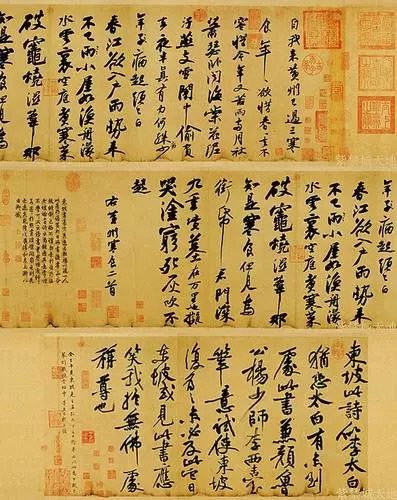
"Huangzhou Cold Food Post" is one of the three major calligraphy posts in running script, written by Su Shi, a writer, calligrapher and painter of the Northern Song Dynasty. Paper version, 25 lines, 129 words in total, is Su Shi's representative work in running script. Originally belonging to the Old Summer Palace collection, it is now in the National Palace Museum, Taipei.
This is a poem of joy and excitement, which is the sigh of life written by Su Shi on the Cold Food Festival in the third year after he was demoted to Huangzhou. The poem is desolate and sentimental, expressing Su Shi's melancholy and loneliness at this time. The calligraphy of this poem was inspired by this mood and situation. The calligraphy throughout the text is full of ups and downs, radiant and unrestrained, without any rash strokes. "Huangzhou Cold Food Poems" has a great influence on the history of calligraphy. It is called "the third running script in the world" and is also the best among Su Shi's calligraphy works.
7. Northern Song Dynasty - Mi Fu's "Shu Su Tie"
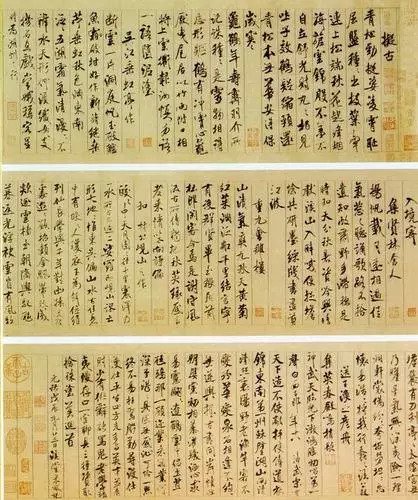
Mi Fu's "Shu Su Tie", also known as "Ancient Poetry Tie", is praised by later generations as the most beautiful Tie in China. Ink on silk, running script. It is 29.7 centimeters long and 284.3 centimeters wide. It was written in the third year of Yuanyou (1088), the third year of Emperor Zongzong of the Song Dynasty, when Mi Fu was thirty-eight years old. He wrote a total of eight poems in various styles, totaling 71 lines and 658 words, signed in black. Written in the third year of Yuanyou (1088), Zhezong of the Song Dynasty, when Mi Fu was thirty-eight years old (1088), he wrote eight poems in various styles on Shu Su. "Shu Su Tie" was collected by famous collectors such as Xiang Yuanbian, Dong Qichang, and Wu Ting in the Ming Dynasty. It fell into the hands of Gao Shiqi, Wang Hongxu, and Fu Heng in the Qing Dynasty. It later entered the Qing Dynasty and is now in the National Palace Museum in Taiwan.
8. Northern Song Dynasty - Huizong Zhao Ji's "Thousand-Character Essay in Cursive Script"
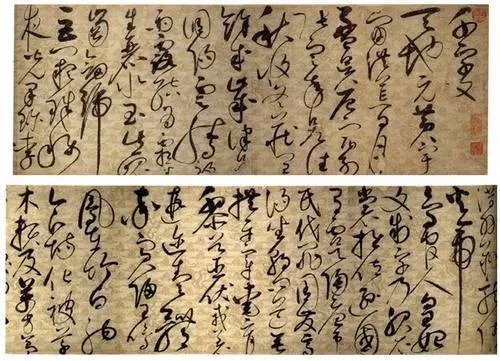
"Thousand-Character Essay in Cursive Script" is a cursive work handed down from generation to generation by Zhao Ji, Emperor Huizong of the Song Dynasty. It is one of the top ten famous calligraphy handed down from generation to generation in China. It was written in 1112. The length is 31.5 cm and the width is 111.72 cm. It is written on a piece of paper with gold clouds and dragons on it. This is Zhao Ji's exquisite work when he was forty years old. The writing style is bold and smooth, unpredictable, and completed in one go, which is quite spectacular. It is a masterpiece after Zhang Xu and Huai Su. It is now in the Liaoning Provincial Museum. It is a rare Huizong cursive scroll. In terms of the penmanship, the mastery of the structure and even the artistic conception of the writing, it is indistinguishable from Huai Su. This scroll of flying ink is written on a piece of paper with a total length of more than three feet, depicting gold clouds and dragons. The exquisite patterns at the bottom of the text were painted stroke by stroke by the palace painters. They complemented Huizong's calligraphy and together they created this unprecedented masterpiece! It is known as "the most unique calligraphy treasure in the world".
9. Yuan Dynasty - Zhao Mengfu's "Red Cliff Ode before and after"
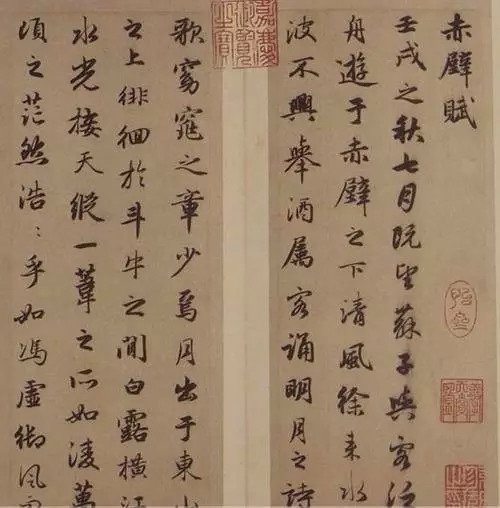
"Chibi Fu before and after" is a rare treasure in the regular script of Zhao Mengfu, the great calligrapher of the Yuan Dynasty. Generally speaking, the calligraphy of the Yuan Dynasty is an era of retrospection and innovation. Based on the regular calligraphy of the Tang Dynasty, various schools of the Yuan Dynasty tried their best to expand the calligraphy of the Second Jin Dynasty and formed a generation style.
Zhao Mengfu's "Ode to the Red Cliffs Before and After", paper, 27.2 cm vertical and 1.1 cm horizontal. In the fifth year of Dade's reign, Zhao Shi was forty-eight years old, at the peak of his energy and physical strength. His calligraphy and calligraphy are exquisite, well-organized, and his writing is strong and smooth. Tang Di said in a postscript: "Dongpo's two poems, Song Xue wanted to write each of them, and put them on the right side of all the books. Therefore, he was well-known for the calligraphy of Jin people. In his later years, he practiced calligraphy. The pen is sophisticated and familiar, and people from the Tang Dynasty know that the early meeting has such profound meaning."
10. Ming Dynasty - Zhu Yunming's "Cursive Script Poems"
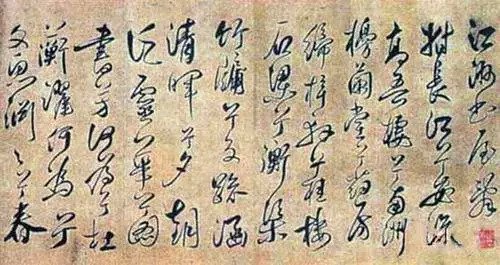
"Poetic Calligraphy in Cursive Script" is known as the masterpiece of cursive calligraphy by the genius of the Ming Dynasty, and is one of the top ten famous calligraphy handed down from generation to generation in China. Written by Ming Zhu Yunming. Now in the collection of the National Palace Museum in Taipei, the paper is 36.1 centimeters long and 1147.5 centimeters wide. It contains four pieces of "Yuefu" by Cao Zhi, which is Zhu Yunming's representative work.
Wang Shizhen's "Yiyuan Maoyan" commented on Zhu Yunming's book and said: "The changes in the late festival are unpredictable, and the character is brilliant and innocent." This post can be regarded as a good one.

